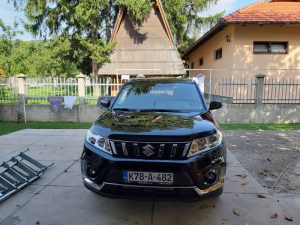
What was the historical process of creating Yugoslavia itself? How did the Partisans come into being? The participation of its people in the National Liberation War (National Liberation Struggle) in World War II? How was Yugoslavia created during the second session of AVNOJ (Anti-Fascist Council of the People’s Liberation of Yugoslavia) in 1943 Jajce?
After the end of the Second World War, SFR Yugoslavia earned international recognition thanks to the fight against fascism, resistance to Stalinism, and the policy of a non-aligned movement in which more than a billion inhabitants of the planet gathered.
How was the development of Yugoslavia after the Second World War, how were the Republics and the Autonomous Provinces formed in its composition, and what was the role of the Republic of Bosnia and Herzegovina in its creation, which bore one of the most significant burdens in the Second World War?
Five enemy offensives of the Axis forces took place on the territory in an attempt to destroy the Supreme Command of the Partisans – Tito himself and the Partisans.
In addition to all of the above and written today, you will have the opportunity to see and hear about everything in more detail.
Today, we will visit Tito’s Bunker, the strictest military secret in modern Yugoslavia, in Konjic.
Atomic War Command, also known as the Ark and nicknamed Tito’s bunker, is a former nuclear bunker and military command center located near the town of Konjic in Bosnia and Herzegovina…

Tito's Bunker Konjic / Jablanica
...
Why this thematic tour, the question arises as to how familiar you are with the very origin of Yugoslavia?
...
What was the historical process of creating Yugoslavia itself? How did the Partisans come into being? The participation of its people in the National Liberation War (National Liberation Struggle) in World War II? How was Yugoslavia created during the second session of AVNOJ (Anti-Fascist Council of the People's Liberation of Yugoslavia) in 1943 Jajce?
...
After the end of the Second World War, SFR Yugoslavia earned international recognition thanks to the fight against fascism, resistance to Stalinism, and the policy of a non-aligned movement in which more than a billion inhabitants of the planet gathered.
...
How was the development of Yugoslavia after the Second World War, how were the Republics and the Autonomous Provinces formed in its composition, and what was the role of the Republic of Bosnia and Herzegovina in its creation, which bore one of the most significant burdens in the Second World War?
Five enemy offensives of the Axis forces took place on the territory in an attempt to destroy the Supreme Command of the Partisans - Tito himself and the Partisans.
...
In addition to all of the above and written today, you will have the opportunity to see and hear about everything in more detail.
...
Today, we will visit Tito's Bunker, the strictest military secret in modern Yugoslavia, in Konjic.
...
Atomic War Command, also known as the Ark and nicknamed Tito's bunker, is a former nuclear bunker and military command center located near the town of Konjic in Bosnia and Herzegovina. Built to protect Yugoslav President Josip Broz Tito and up to 350 members of his inner circle in the event of an atomic conflict, the structure is made up of residential areas, conference rooms, offices, strategic planning rooms, and other regions. The bunker remained a state secret until after the breakup of Yugoslavia in the 1990s.
...
Built between 1953 and 1979 inside a hill at the foot of Zlatar Mountain, the ARK is the largest nuclear shelter and one of the most extensive underground facilities ever built in the former Yugoslavia. For over a decade after its completion, it was the most secret military installation in the country. All construction workers were carefully selected and vetted, signing a contract of silence, and all staff members held the highest security clearance. In 1979, when work was completed after 26 years and $4.6 billion in construction costs.
...
Jablanica - Battle of the Neretva / Battle of the Wounded - Due to historical circumstances, during the Second World War, many major events took place in Bosnia and Herzegovina that affected the course of the war. One part of these events relate to the famous Operation Weiss (as it was written in German documents) or the Fourth Enemy Offensive or the Battle of the Neretva - the most humane battle, as it was often called in Yugoslav historiography.
...
The Germans wanted to destroy the central command of the Partisans, the Central Committee of the Communist Party of Yugoslavia, and the main Partisan Hospital. The Axis forces gathered nine divisions, six German, three Italian, several Ustasha and Home Guard associations, and several Chetnik units. It is estimated that over 150,000 soldiers of the Axis forces attacked much smaller partisan detachments and the wounded.
- Licensed Travel Guide
- Transport by modern vehicle and driver
- Tickets to Museums,
- Food and drink
- And other personal expenses
 |
 |
 |
 |
 |
 |
 |
 |
 |
 |
 |
 |
Tour Guide
Sanel Silajdzić - Tourist guide
+387 61 237 906
bosnianhistoryguide@gmail.com







































